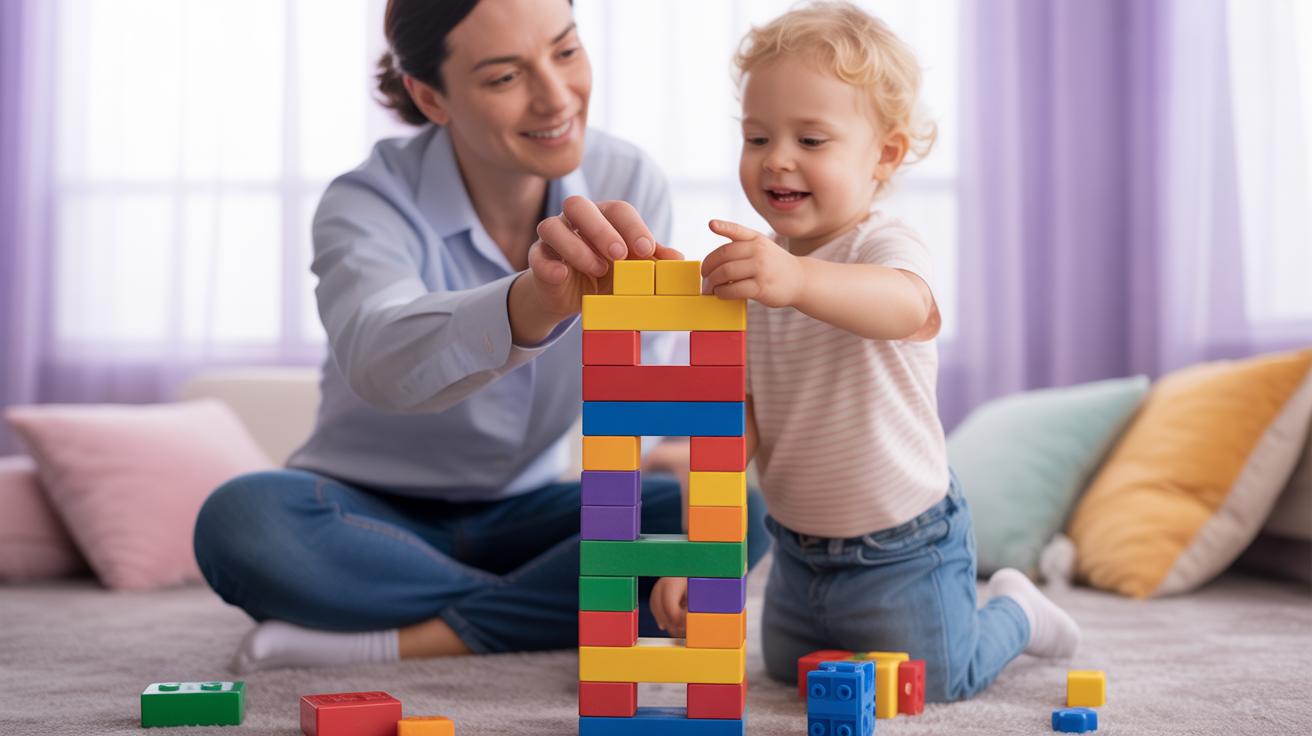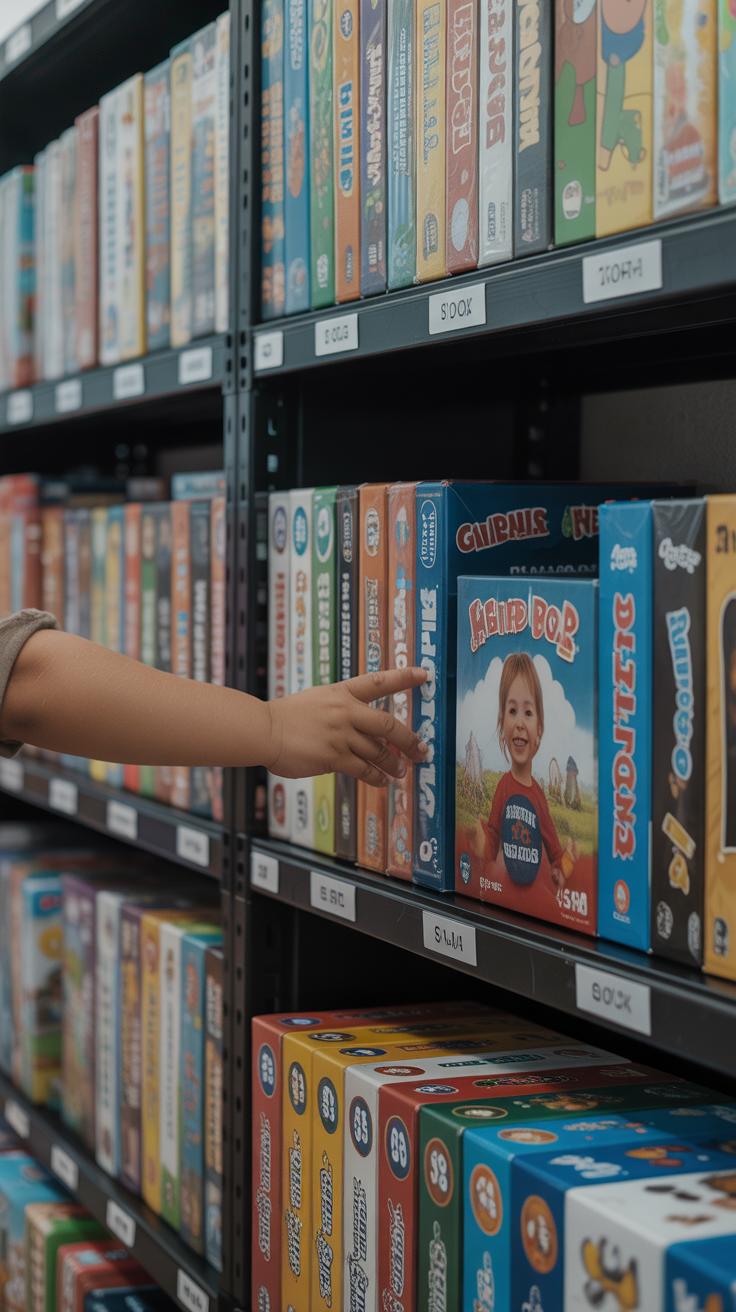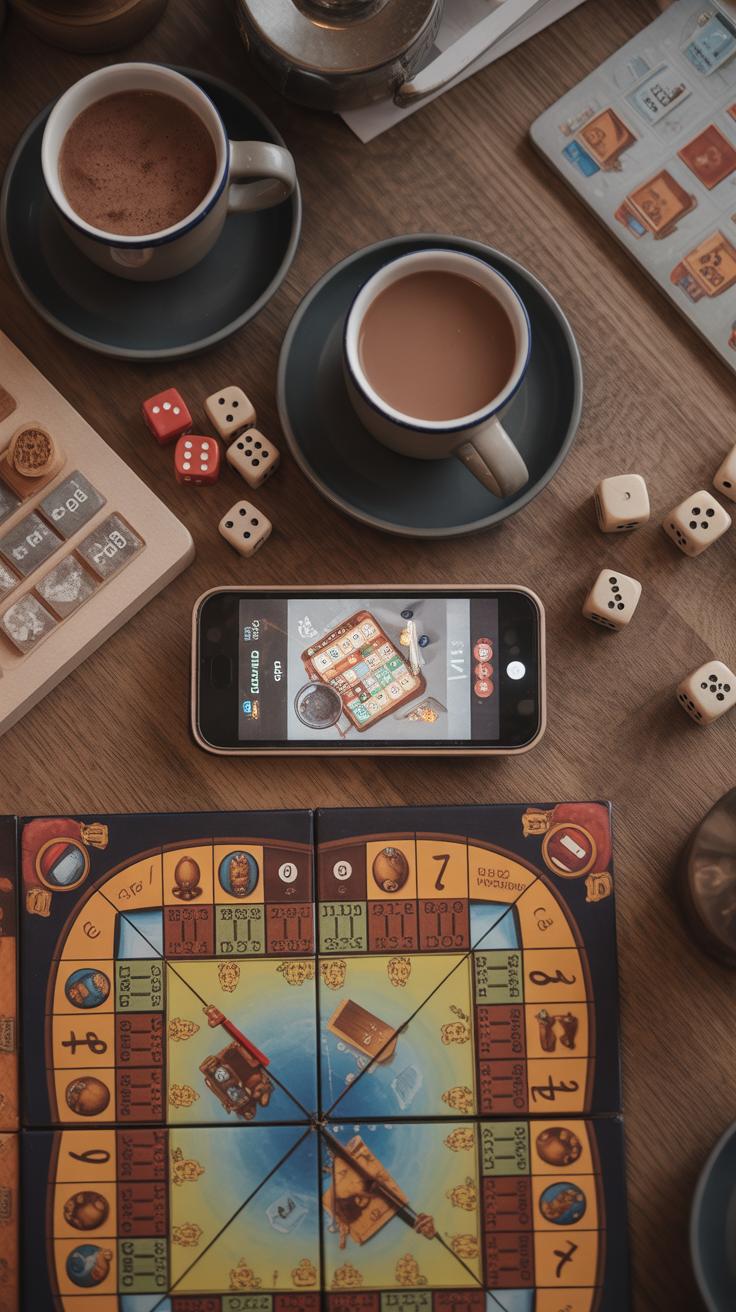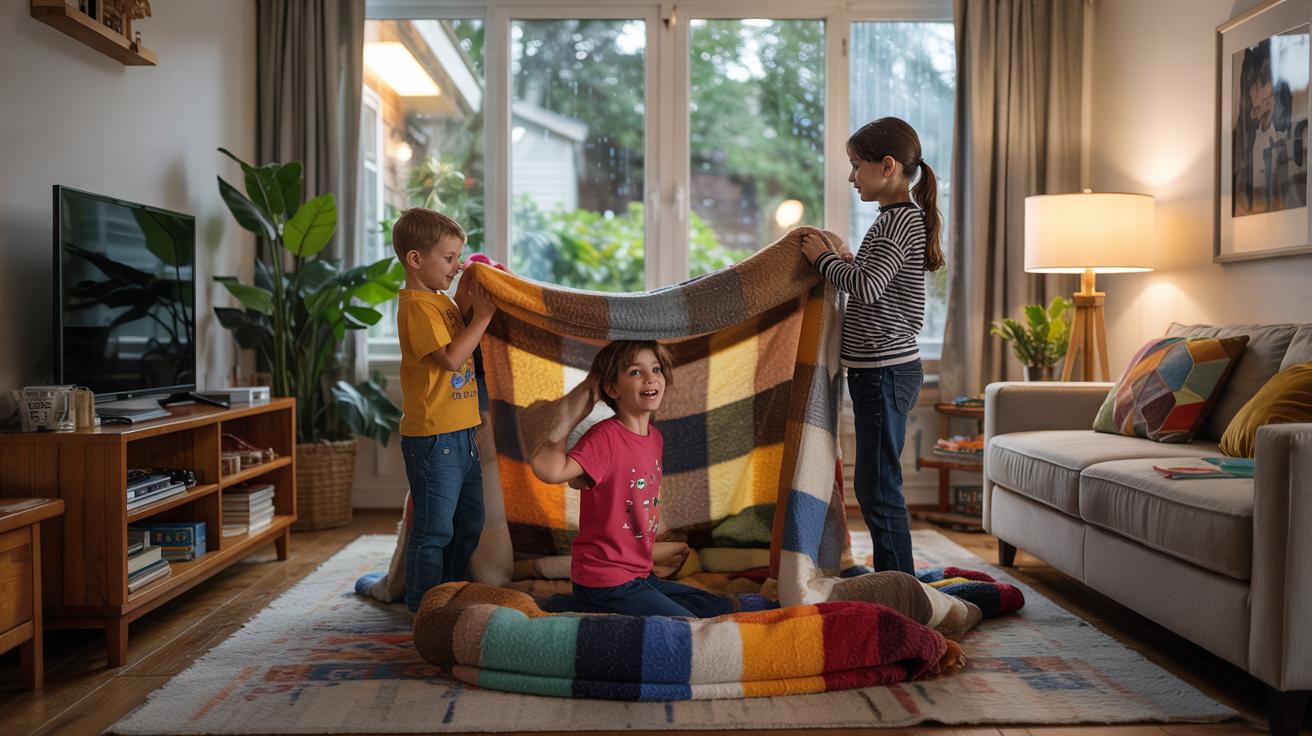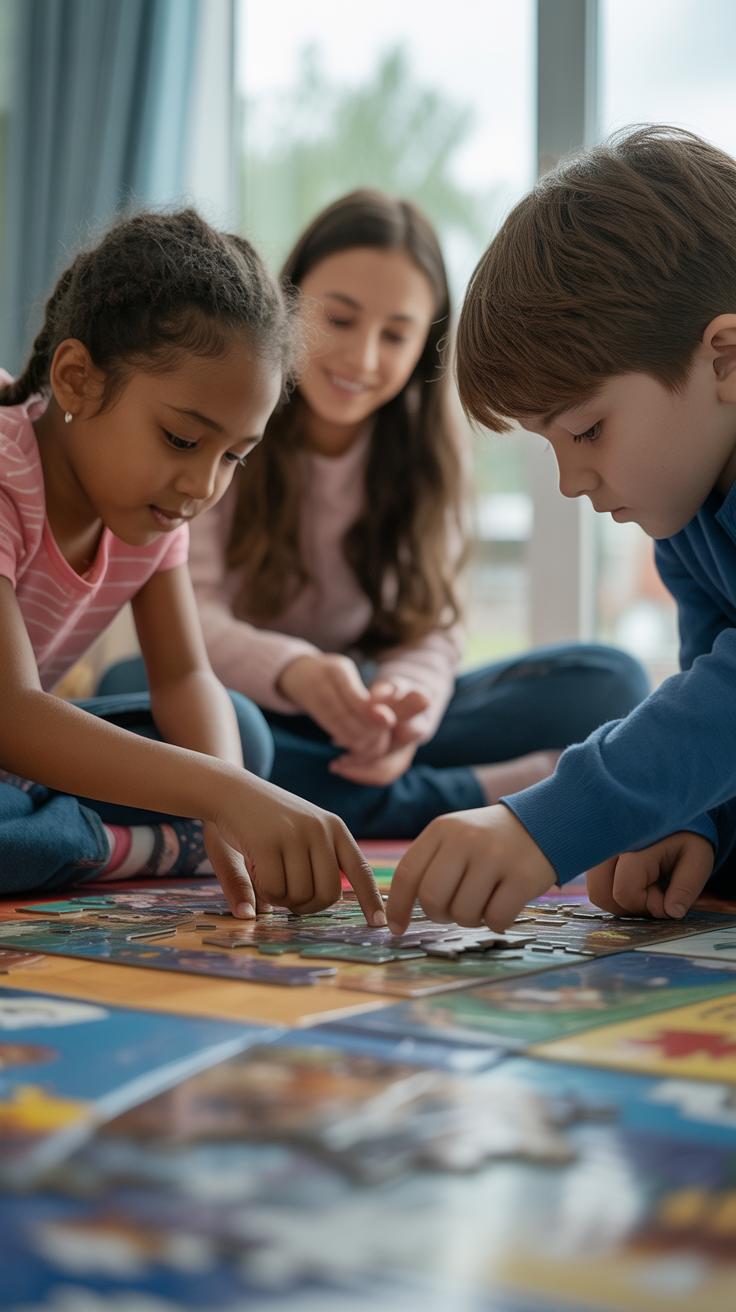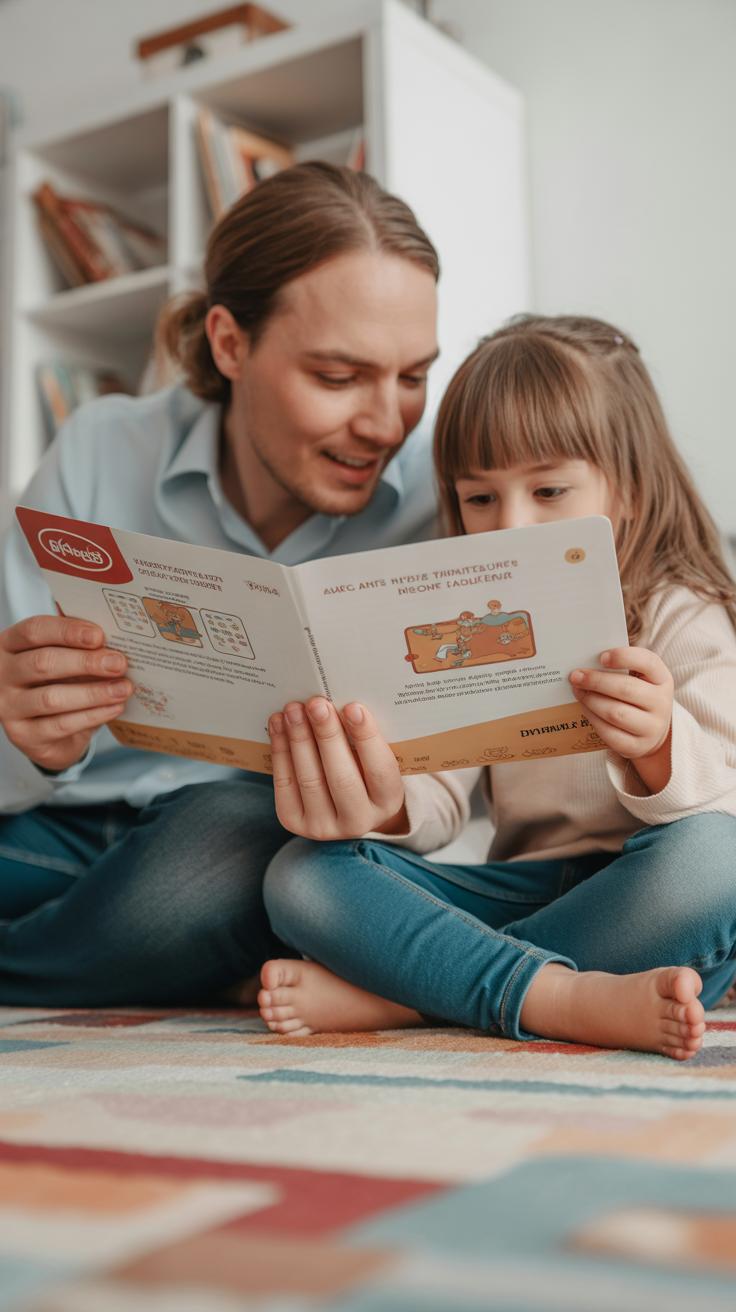Introduction
Playing games with your kids can be a great way to spend quality time together. It not only creates fun moments but also builds a stronger bond. Games help develop social skills, problem-solving abilities, and encourage positive communication between you and your child. Selecting the right games invites laughter, learning, and moments of connection.
This article highlights games that you can enjoy with your kids to create lasting memories. We share ideas suitable for different ages and interests. You’ll find practical tips on how to choose and play games that engage your child while fostering trust and teamwork. Are you ready to transform playtime into a special time that brings you and your kids closer?
Why Playing With Kids Matters
Playing games with your children plays a key role in their emotional growth. When you spend time engaging in play, you help your child learn how to express feelings, share ideas, and solve problems. These moments create a safe space for them to explore emotions and build social skills.
Games encourage conversation. You ask questions, listen closely, and respond with care. This open exchange strengthens your relationship and improves communication. The experience makes your child feel heard and valued.
Scientific studies show interactive play supports brain development. Areas related to attention, memory, and language improve when adults and kids play together. This interaction helps children learn faster and feel more confident in social settings.
Can you recall the last time a simple game brought you closer to your child? That moment is the foundation of trust and learning that will benefit them for life.
The Role of Play in Child Growth
Play affects many aspects of how children grow. Through games, kids develop thinking skills that help them solve daily challenges. For instance, building puzzles improves focus and reasoning.
Emotionally, play lets children manage feelings. Acting out roles in pretend games teaches them empathy and helps them understand others. Socially, playing with peers or adults builds teamwork and sharing abilities.
Different games suit different stages. Toddlers learn cause and effect with simple ball games. Preschoolers benefit from memory and matching games. School-age children grow their problem-solving skills through board games and strategy play.
How can you use play to support your child’s next milestone? Choosing the right activity encourages growth in key areas where your child needs the most help.
Building Stronger Bonds Through Interaction
Playing games with your child builds trust between you. As you share laughs, challenges, and victories, your connection becomes deeper. Your child learns that you are a reliable and supportive partner.
Games promote honest communication. When kids feel safe to express opinions or feelings, both of you can understand each other better. This reduces tension and helps solve conflicts with kindness.
Stress decreases when families play together. Laughter releases tension and helps everyone relax. This creates a peaceful home environment where respect grows.
Try playing a favorite game tonight. Notice how your child opens up or relaxes. These small acts of shared joy can strengthen your relationship over time.
Choosing Games That Fit Your Child
Selecting the right games for your child depends on their age, interests, and what they need to develop. Consider whether a game is educational, physical, creative, or digital. Educational games build skills like reading or math. Physical games encourage movement and coordination. Creative games let kids express themselves through art or storytelling. Digital games can offer interactive challenges but should be chosen carefully for content and screen time limits.
Think about what benefits you want your child to gain. Does the game teach problem-solving? Does it promote teamwork or independence? Evaluate games by how they match your child’s abilities and interests, not by what’s popular or highly rated. Ask yourself, will this game keep my child engaged and support their growth? Making these choices thoughtfully helps turn playtime into a meaningful experience for both you and your child.
Age Appropriate Game Selection
Adjust the game type and difficulty based on your child’s age and skills. For toddlers, pick simple games with bright colors and basic rules, like matching shapes or stacking blocks. These support early motor skills and attention span.
School-aged kids benefit from games that challenge their thinking and social skills. Board games like “Candy Land” or simple card games work well. You can introduce team games or puzzles to build cooperation and logic.
Preteens enjoy more complex games requiring strategy or creativity, such as word games, board games like “Catan,” or active games like scavenger hunts. Make sure the game is not too easy or frustrating for their level.
Considering Your Child’s Interests and Personality
Observe how your child prefers to play. Do they like being active or sitting quietly? Are they competitive or cooperative? Match game choices to these traits. Active kids may enjoy tag or dance games, while calm kids might prefer storytelling or art projects.
Introduce different types of games to maintain their interest. Switching between physical tasks, puzzles, and creative challenges keeps playtime fresh and exciting.
Ask questions like: What makes my child smile the most during play? What kind of games hold their attention longer? Tailoring game choices to these clues helps create fun moments that deepen your bond over time.
Classic Board Games for Family Fun
Classic board games create moments where families gather to interact and cooperate. These games teach patience as players wait their turn and think through moves carefully. Strategic thinking develops as children plan steps ahead and consider different outcomes.
Games like Uno and Sorry! offer simple rules that children grasp quickly while fostering friendly competition. Connect Four encourages kids to spot patterns and block opponents’ moves. These games invite teamwork when played in pairs or teams, boosting communication skills between children and parents.
Choosing board games easy to understand avoids frustration and keeps everyone engaged. Your game nights can turn into regular opportunities for bonding that build both patience and strategy in a fun way. How could you make your usual family time stronger with a classic board game?
Popular Board Games for All Ages
Many board games fit kids of different ages and family groups. Monopoly teaches money management and decision making as players buy and trade properties. Guess Who? sharpens observation and deduction as players ask questions to identify a character.
Jenga blends steady hands with risk assessment when removing blocks without toppling the tower. Chutes and Ladders is a simple race game that introduces counting and the idea of ups and downs in a fun way.
These games keep family members of all ages involved, learning skills while sharing laughs. What new skills might your children discover through a familiar game?
Making Board Games More Engaging
Changing rules can add new life to classic games. Try playing Uno with a rule that forces players to swap hands when a certain card appears. In Monopoly, allow players to form temporary alliances to negotiate deals together.
Adding small timed challenges, like completing your turn within 30 seconds, brings excitement and sharpens decision speed. You can create variants where winners earn small rewards or where certain actions earn bonus points, changing typical strategies.
Ask your kids what twists they’d enjoy. Adjusting rules encourages creativity, keeping everyone interested game after game. How might you reinvent your favorite board game to suit your family’s interests better?
Outdoor and Physical Games To Energize Your Kids
Outdoor games get kids moving and help them develop strong muscles and coordination. Playing outside boosts their heart health and improves lung capacity. These games also teach children how to work with others, follow rules, and share. When you play with your kids in yards, parks, or open spaces, you show them you value time together and fun.
Simple games like tag, hide-and-seek, or catch invite children to run, jump, and stay active. These activities increase energy and improve mood. When your child feels good physically, they engage better emotionally. Do you notice how kids smile and laugh more in fresh air? Playing with parents adds trust and closeness, strengthening your bond.
Think about your favorite park or backyard spot. What games can you try there that get everyone moving? This outdoor time builds habits that help children stay healthy and connected for life.
Simple Outdoor Games to Try
Tag is easy to organize and requires no equipment. One person chases the others, trying to tag them. When caught, the next person becomes “it.” This game improves speed and agility while teaching children about taking turns.
Hopscotch is a classic that helps with balance and number recognition. Draw a grid with chalk and take turns hopping through the squares. Your child will develop coordination while having fun.
Ball games like catch or kicking a soccer ball can be done almost anywhere. These promote hand-eye or foot-eye coordination and teamwork. You can create simple rules to keep the game fair and involve everyone.
These games require minimal setup and encourage children to move and interact, making outdoor time an opportunity to bond through play.
Encouraging Physical Activity Through Play
Children often resist physical activity when it feels like a chore. You can make moving fun by joining in and showing excitement. Your participation motivates kids to stay engaged longer. Try different games to find what your child enjoys most.
Set challenges that fit your child’s age and skill, like running a certain distance or catching the ball a few times in a row. Celebrate small wins to boost confidence. Asking, “Do you want to race me to that tree?” sparks their curiosity and energy.
Make play time unpredictable with new games or variations. Mix tag with a quick obstacle course or add music to dancing outside. Your involvement shows kids that exercise is not just healthy but also a way to connect and have fun together.
Creative Games to Spark Imagination
Games that encourage storytelling, art, and role-playing help children develop creative thinking and communication skills. You don’t need many materials for these activities, just a bit of time and willingness to engage. Collaborative story-building invites your child to imagine new worlds and characters, while you offer ideas and listen. This back-and-forth strengthens their ability to express thoughts and emotions clearly.
Games like “Create a Story” ask each player to add a sentence, building a tale together. “Role Swap” lets kids act out different family roles or favorite characters, drawing them into others’ perspectives. Art games, such as drawing a picture piece by piece, push kids to think visually and work with you to finish the image. These activities support problem-solving and teamwork, making the creative process a shared adventure.
What stories will you and your child invent today? How can drawing or acting help your child speak more confidently? Simple, playful games have a big impact on imagination and closeness.
Storytelling and Role-Playing Games
Crafting stories and acting out roles opens doors for children to practice empathy and improve language skills. When kids create stories with you, they learn to organize ideas and use descriptive words. Role-playing changes their viewpoint, helping them see how others feel and think.
Try “Story Chain,” where each person adds a part of a story aloud. This improves listening and encourages quick thinking. Role-playing games like “Shopkeeper and Customer” let children use dialogue and problem-solving in realistic situations. These experiences make communication more natural and build social understanding at the same time.
How does becoming another character change your child’s view of the world? What new words do they use when telling stories with you?
Art and Craft Games
Combining art with play creates activities that boost creativity and teamwork. Drawing challenges such as “Draw It Blind,” where one person describes an image and the other draws, sharpen listening and imagination. Building crafts together—like simple paper airplanes or collages—promotes planning and fine motor skills.
You can set up a “Create a Creature” game using recycled materials where you and your child build a new animal with paper, glue, and colors. These projects invite conversation, problem-solving, and shared pride in finished work. They turn moments of play into opportunities to express ideas without words.
What can you build or draw with your child today? How will these art-based games shape your child’s ability to communicate and innovate?
Digital and Educational Games To Enhance Learning
Digital games that teach while entertaining your kids offer a powerful way to support their learning. Games focused on math skills, like Prodigy Math, make practicing addition, subtraction, and multiplication fun and interactive. For reading, apps like Epic! offer a vast library of books paired with quizzes that build comprehension. Coding games such as Scratch Jr. introduce children to basic programming concepts through simple drag-and-drop commands. Puzzle games that challenge problem-solving, like Lightbot, encourage logical thinking and persistence.
Choosing age-appropriate digital games without violent content helps keep your child’s experience positive and stress-free. When you play these games together, you create chances to discuss new ideas, solve challenges, and celebrate progress. How can you turn screen time into a shared learning adventure? Selecting the right game and joining your child’s play session transforms digital moments into quality bonding.
Selecting Educational Digital Games
Before downloading any game or app, review its educational goals closely. Does it teach skills your child needs? Check for clear instructions and learning outcomes. Read user reviews from parents and educators to ensure the content is suitable for your child’s age and maturity. Balance screen time by setting limits and mixing digital play with offline activities. Consider whether the game encourages active participation or just passive watching. How often do you assess the benefits your child gains from their digital games?
Interactive Learning Through Digital Play
Digital games can bridge the gap between school and home learning. When you play along, you help your child understand new ideas and feel more confident. Many apps offer progress tracking, which can support discussions about goals and challenges. You can also spark your child’s curiosity by exploring new subjects together, like geography or science-themed games. Have you noticed how sharing these moments affects your child’s enthusiasm for learning? Encouraging questions and teamwork through digital play opens doors to endless discovery.
Games To Teach Teamwork and Cooperation
Playing games that require players to work together helps children learn social skills like sharing, listening, and solving problems as a group. These cooperative games shift the focus from winning alone to helping each other succeed. When you play such games with your kids, you encourage them to communicate clearly and value each team member’s ideas.
Cooperative games are ideal for families and groups because everyone wins or loses together. This creates a natural environment for kids to practice patience and empathy. You might notice children take turns more willingly or offer support without being asked after some play sessions.
Do you see your kids working well together during play? Try introducing games that highlight teamwork over competition. This can deepen your bond and teach lessons that go beyond the game board or screen.
Benefits of Cooperative Play
When children engage in cooperative play, they develop emotional intelligence by recognizing emotions in themselves and others. This helps build stronger relationships at home and school. Working together requires listening carefully, sharing ideas, and trusting teammates.
Cooperative games reduce conflict while encouraging kids to manage frustration and celebrate shared achievements. You, as a parent, also model positive conflict resolution. Those moments offer opportunities for children to practice kindness and patience.
How does your child react when game challenges arise? Cooperative play can provide a safe space to try different ways of handling disagreements and setbacks.
Examples of Cooperative Games
Consider playing “Forbidden Island,” where players cooperate to collect treasures before the island sinks. Each player has special roles, and success depends on working closely together. Explain each player’s strengths, and encourage sharing strategy ideas.
“Outfoxed!” is a family-friendly mystery game that requires players to gather clues and solve a puzzle as a team. Kids learn to listen to others and combine information effectively. You can modify rules to keep everyone involved regardless of age.
For active play, try “Human Knot,” where participants stand in a circle, hold hands randomly, and work together to untangle without letting go. This physical activity builds communication and patience in a fun setting.
Have you tried any cooperative games? Start with simple rules and grow complexity as your children’s teamwork skills strengthen.
Making Playtime Meaningful and Consistent
Carving out time for games with your children can feel challenging. Start by choosing specific days and times dedicated to play, like right after dinner or before bedtime. Treat this time as an appointment you don’t want to miss. Even twenty minutes can make a big difference when it happens regularly.
Keep your gaming area cozy and inviting. Use cushions, clear away clutter, and have games easily accessible. When you enter playtime, turn off screens and give your full attention. Ask yourself how often you truly focus only on your child during these moments. Your presence matters more than perfect gameplay.
Notice your kid’s reactions during games. Celebrate their effort and let the experience be about connecting, not winning. Small habits such as asking what game they want to play or how they feel during play can deepen your bond over time. What will you do today to make your playtime count?
Establishing Routine Play Sessions
Look at your weekly schedule and identify pockets of time that can become play sessions. Setting a recurring day like every Tuesday evening helps everyone know what to expect. Share this plan with your family so kids feel included in the decision.
When your day gets busy, remind yourself that consistency beats long sessions. Fifteen minutes daily can add up more than a scattered hour once in a while. Use alarms or calendar reminders if needed. You could even link playtime with another routine, like starting games right after homework.
What prevents you from setting this routine? Breaking down barriers can help you commit. Maybe invite your child to suggest game choices to build excitement. This way, playtime transforms from an obligation into a shared highlight.
Creating a Positive Play Environment
Choose a quiet spot for games where interruptions are minimal. Silence your phone or leave it in another room to stay focused. A tidy space lets everyone concentrate on fun instead of distractions. Evaluate your environment from your child’s view: is it welcoming and safe?
Soft lighting and comfortable seating encourage relaxation. Let kids help arrange the space; their input makes the setting feel special. During play, listen carefully and respond to their ideas. Showing interest in their moves or thoughts keeps the atmosphere positive and connected.
Remember, frustration can derail play quickly. Offer gentle reminders to keep it lighthearted and remind everyone that mistakes are part of learning. How can you adjust your space to make every game time enjoyable and calm?
Conclusions
Spending time playing games with your children offers more than just amusement. It supports their development and strengthens your relationship. The games presented here encourage cooperation, creativity, and shared joy. By playing together, you gain insight into your child’s world and build a foundation of trust.
Choosing games that suit your child’s age and personality makes playtime enjoyable and meaningful. Remember to focus on interaction and presence rather than competition. How will you make your next game session a special moment to connect and grow together?

